Menu
Physics Lesson 12.7.1 - The Doppler Effect in Sound Waves
Please provide a rating, it takes seconds and helps us to keep this resource free for all to use
Welcome to our Physics lesson on The Doppler Effect in Sound Waves, this is the first lesson of our suite of physics lessons covering the topic of The Doppler Effect, you can find links to the other lessons within this tutorial and access additional physics learning resources below this lesson.
The Doppler Effect in Sound Waves
All sound waves have their specific wavelength and frequency depending on the pitch, as discussed in the Physics tutorial covering Sound Waves. Intensity and Sound Level. A sound wave produced by a stationary source propagates in spherical pattern as shown in the figure below.
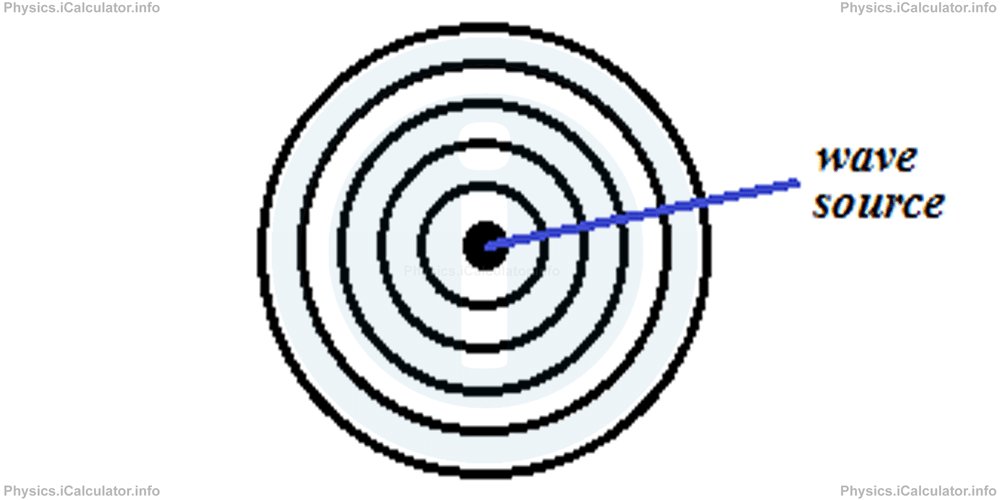
The equidistant circles show that wavelength is the same in all directions. If we assume the medium as uniform, then the frequency of sound waves is the same in all directions as well.
When the source is moving in a certain direction, the wavelength decreases in the moving direction and increases in the opposite side as shown below.
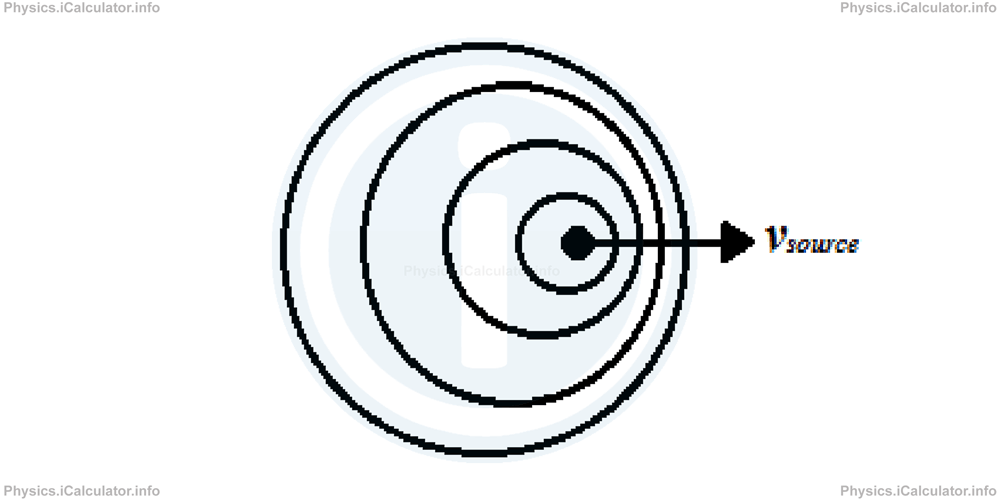
The equidistant circles show that wavelength is the same in all directions. If we assume the medium as uniform, then the frequency of sound waves is the same in all directions as well.
When the source is moving in a certain direction, the wavelength decreases in the moving direction and increases in the opposite side as shown below.
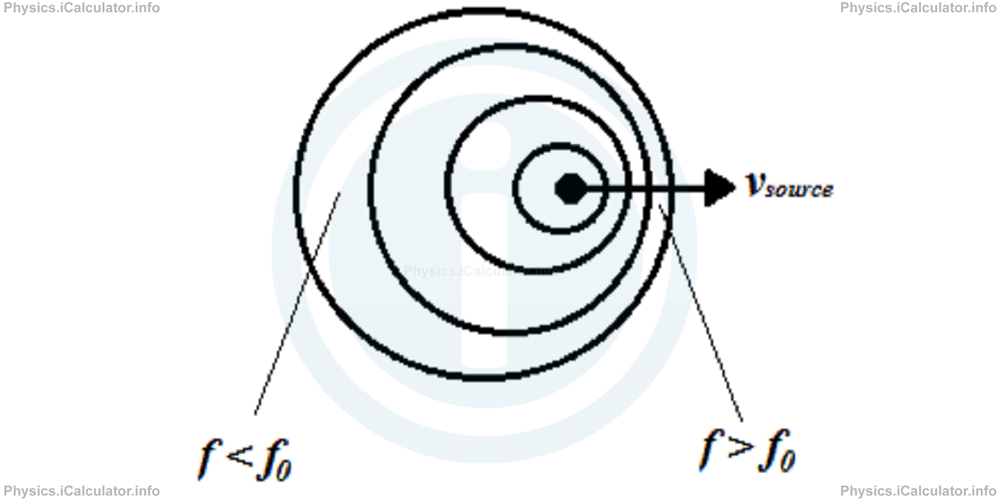
Thus, on the left side we have f < f0 because λ > λ0 (wavelength and frequency are inversely proportional if the speed v is constant), while on the right side we have f > f0 because λ < λ0. You can compare the wavelengths by considering the distance between two adjacent circles, which represent the waveform. As a result, if the waves considered are sound waves, a listener (detector) on the left side will hear a lower-pitch sound than usual while a listener on the right side of the wavefront, will hear a higher-pitch sound than usual.
This effect of frequency change when the source and the detector are in relative motion to each other is known as the Doppler Effect.
Now, let's consider the Doppler Effect from the mathematical viewpoint. There are three possible cases of source and detector movement in respect to each other. They are:
- Detector moving, source stationary
- Source moving, detector stationary
- Both detector and source are moving
In the following paragraphs, we will explain how the quantities involved in the Doppler Effect are related to each other in each case.
a) Detector moving, source stationary
Not necessarily, a detector must be a complicated electronic apparatus; it can be simply a human ear. In this paragraph, we consider the situations in which the person who hears the sound is moving towards or away from a stationary sound source.
Let v be the speed of sound wave and vd the speed of human (the moving detector). Thus, the distance between two fixed points A and B will be the sum of the distances travelled by the two moving systems - the wave and the detector. Hence, since there is a single event to be considered (time is the same for both moving systems) the total distance AB travelled by the two approaching systems is
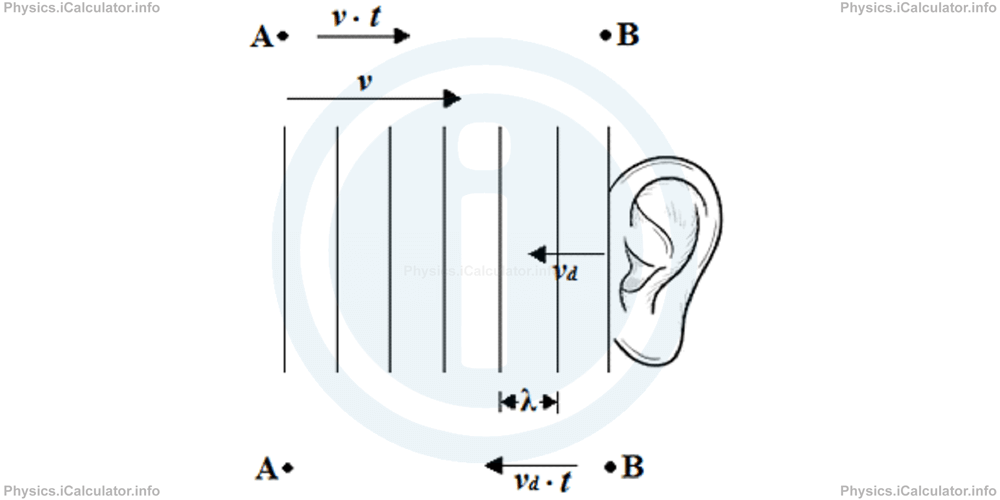
The number of wavelengths N intercepted by the detector during this process is
= v × t + vd × t/λ
= (v + vd) × t/λ
Hence, we can write
The left side of the last equation gives the new frequency f detected by the listener in motion. Hence, we obtain
Since the wavelength λ of the original wave (from the equation of waves v = λ × f0) is
we obtain after substituting it to the previous equation
or
The last equation represents the Doppler Effect equation for a detector moving towards a stationary source.
When the detector is moving away from a stationary source, we have for the distance AB:
and after following the same procedure as before, we obtain for the new frequency detected by the listener:
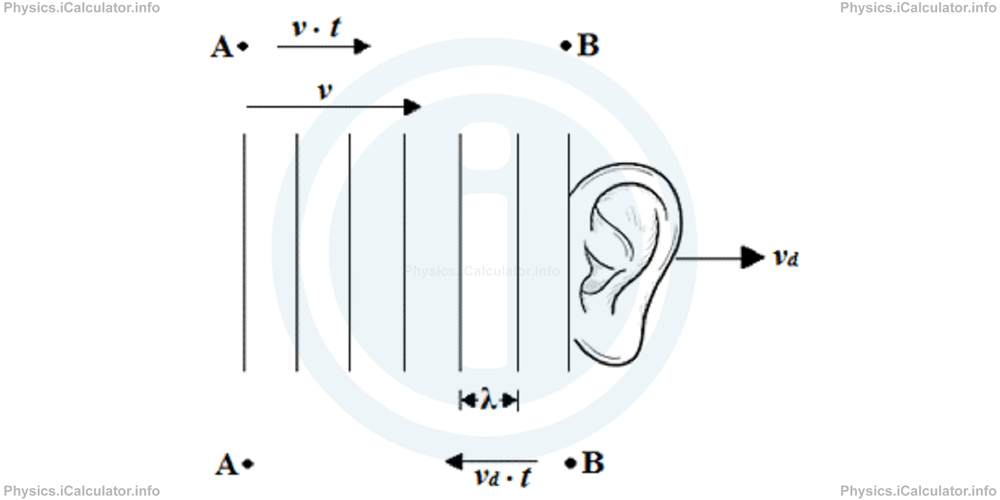
Example 1
A stationary source emits sound waves of frequency 200 Hz. A listener is approaching the source at 20 m/s. What is the frequency detected by the listener if the sound speed is 343 m/s?
Solution 1
There are the following clues in this problem:
v = 343 m/s
vd = 20 m/s
f = ?
Since the receiver is approaching the stationary source, we must apply the equation
to calculate the detected frequency of sound waves. Thus, after substitutions we obtain
= 211.7 Hz
As you see, the frequency detected by the listener is higher than the original frequency emitted by the source. As a result, the listener will hear a higher-pitch sound than it would hear if he was not moving.
b) Source moving, detector stationary
In this case, there is no vd in the formula as the detector is not moving. Now, there is the source speed vs the new quantity to be considered.
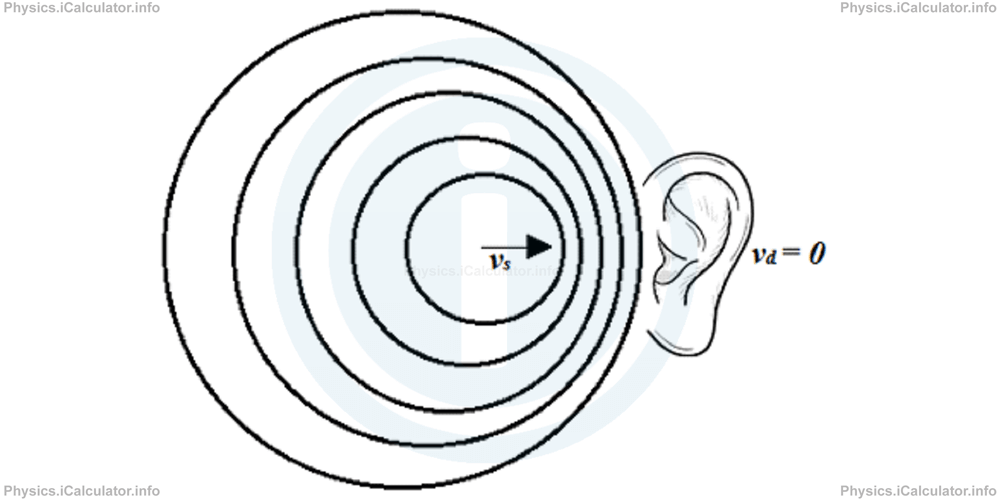
During a given time interval t, the wavefront moves at the distance d0 = v × t and the source at the distance ds = vs × t. Therefore, the relative distance of the two moving systems is
= v × t - vs × t
Since the distance d is a multiple of wavelength (d = N × λ) and the time t is a multiple of period (t = N × T), we can focus on one wavelength only. Therefore, the equation above becomes
The new frequency detected (based on the waves' equation) is
Substituting the expression for the wavelength obtained earlier in the above equation, we obtain
Given that T = 1/f0 where f0 is the original frequency emitted by the source, we obtain
= v/v - vs/f0
Thus, the frequency detected by a stationary listener when the sound source is approaching him, is
Using the same approach for a sound source moving away from a stationary detector, we obtain
Example 2
An ambulance car emits sound waves of frequency equal to 1500 Hz. If the car is moving away from a stationary man at 37 m/s, what is the frequency detected by the man's ear? Take the speed of sound in air equal to 343 m/s.
Solution 2
We have the following clues in this problem:
vs = 37 m/s
v = 343 m/s
f = ?
Since the source is moving away from the stationary receiver, we must use the equation
to calculate the frequency of sound detected by him. Thus, substituting the above values, we obtain
= 343 m/s/380 m/s × 1500 Hz
= 1354 Hz
Therefore, the man in this will hear a lower-pitched sound than usual. This will decrease his state of alert, as he understands that the ambulance car is moving away from his location even though he does not see the car.
c) Source and detector are both moving
In this case, we must consider both the aforementioned factors, i.e. we must include three speeds in the formula - the speed of wave v, that of the source vs and the speed of detector vd. The signs in the formula depend on the relative direction of motion. The general formula for the Doppler Effect for the new frequency in this case, is:
Example 3
A source moving due right at 30 m/s emits an acoustic (sound) signal. A receiver moves towards the source (due left) at 20 m/s. What is the sound frequency detected by the receiver if the original sound emitted by the source has a frequency equal to 400 Hz? Take the speed of sound in air equal to 343 m/s.
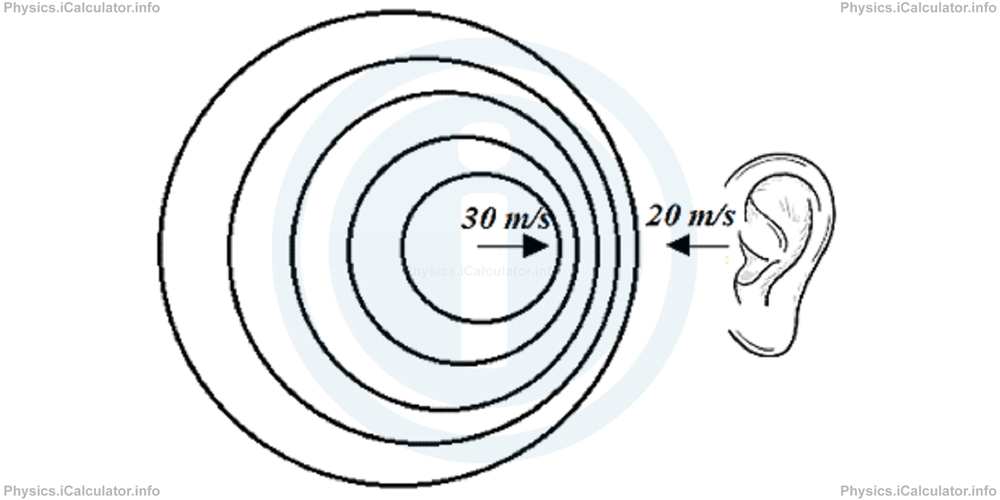
Solution 3
There are two things to consider in this problem:
- The source is moving towards the receiver (detector). This means we have to write v - vs in the denominator.
- The receiver (detector) is moving towards the source. This means we have to write v + vd in the numerator.
Therefore, the Doppler Effect formula for this scenario becomes:
where, v = 343 m/s, vd = 20 m/s, vs = 30 m/s and f0 = 400 Hz.
Substituting the above values, we obtain for the new frequency:
= 363 m/s/313 m/s × 400 Hz
= 463.9 Hz
This means the receiver will hear a higher-pitch sound than normal.
You have reached the end of Physics lesson 12.7.1 The Doppler Effect in Sound Waves. There are 2 lessons in this physics tutorial covering The Doppler Effect, you can access all the lessons from this tutorial below.
More The Doppler Effect Lessons and Learning Resources
Whats next?
Enjoy the "The Doppler Effect in Sound Waves" physics lesson? People who liked the "The Doppler Effect lesson found the following resources useful:
- Sound Feedback. Helps other - Leave a rating for this sound (see below)
- Optics Physics tutorial: The Doppler Effect. Read the The Doppler Effect physics tutorial and build your physics knowledge of Optics
- Optics Revision Notes: The Doppler Effect. Print the notes so you can revise the key points covered in the physics tutorial for The Doppler Effect
- Optics Practice Questions: The Doppler Effect. Test and improve your knowledge of The Doppler Effect with example questins and answers
- Check your calculations for Optics questions with our excellent Optics calculators which contain full equations and calculations clearly displayed line by line. See the Optics Calculators by iCalculator™ below.
- Continuing learning optics - read our next physics tutorial: Mirrors. Equation of Curved Mirrors. Image Formation in Plane and Curved Mirrors
Help others Learning Physics just like you
Please provide a rating, it takes seconds and helps us to keep this resource free for all to use
We hope you found this Physics lesson "The Doppler Effect" useful. If you did it would be great if you could spare the time to rate this physics lesson (simply click on the number of stars that match your assessment of this physics learning aide) and/or share on social media, this helps us identify popular tutorials and calculators and expand our free learning resources to support our users around the world have free access to expand their knowledge of physics and other disciplines.